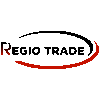

Flex/flock printing falls under the plot printing process and is the most commonly used printing technique.
Plotter printing is the most effective technique for highlighting motifs with vibrant colors and sharp contours. No other printing process promises such brilliant color results. The printed motifs are particularly resistant to UV rays and do not lose their intensity even after years of intensive use. Because each color layer is cut from colored plastic film, only a limited color selection is possible.
By applying specially cut foils, an interesting appearance is created, with flex printing usually having a glossy layer, while flock printing has a matt and velvety finish.

Simple designs with a few color areas are best suited for flex and flock printing. A special film is prepared for each color layer on the cutting plotter and then weeded by hand. This leaves a clean cut of the desired design, which is then applied to the product in a printing press.
This process is repeated for each additional layer of paint.

Because the colored textile film has a certain thickness, a maximum of three color layers are possible. Otherwise, the fabric becomes too inflexible and wrinkles may form during wear. Therefore, color gradients and photographic motifs, as with direct digital printing, are not possible. Flex and flock prints have a special feel; each color layer stands out delicately, and the motif is truly remarkable. Flex film is characterized by a glossy varnish effect and is relatively lightweight, while flock film hardens.

the fabric and consists of microscopic textile fibers that rise slightly, creating a velvety effect.
The color does not change when wet and the pattern cannot be deformed, which is why this type of printing is very popular for swimwear and winter sports items.
What sets us apart
Sustainable textiles
All of our textiles are sustainable. Together, we're making the world a better place!
Fast shipping
You will receive your order climate-neutrally in just a few days!
Made to last
Away from fast fashion! When you shop with us, you get quality, because quality lasts longer!
We plant trees
For every €40 of purchases, we donate a tree. This tree will be planted by Treeplantingprojects in Germany!





